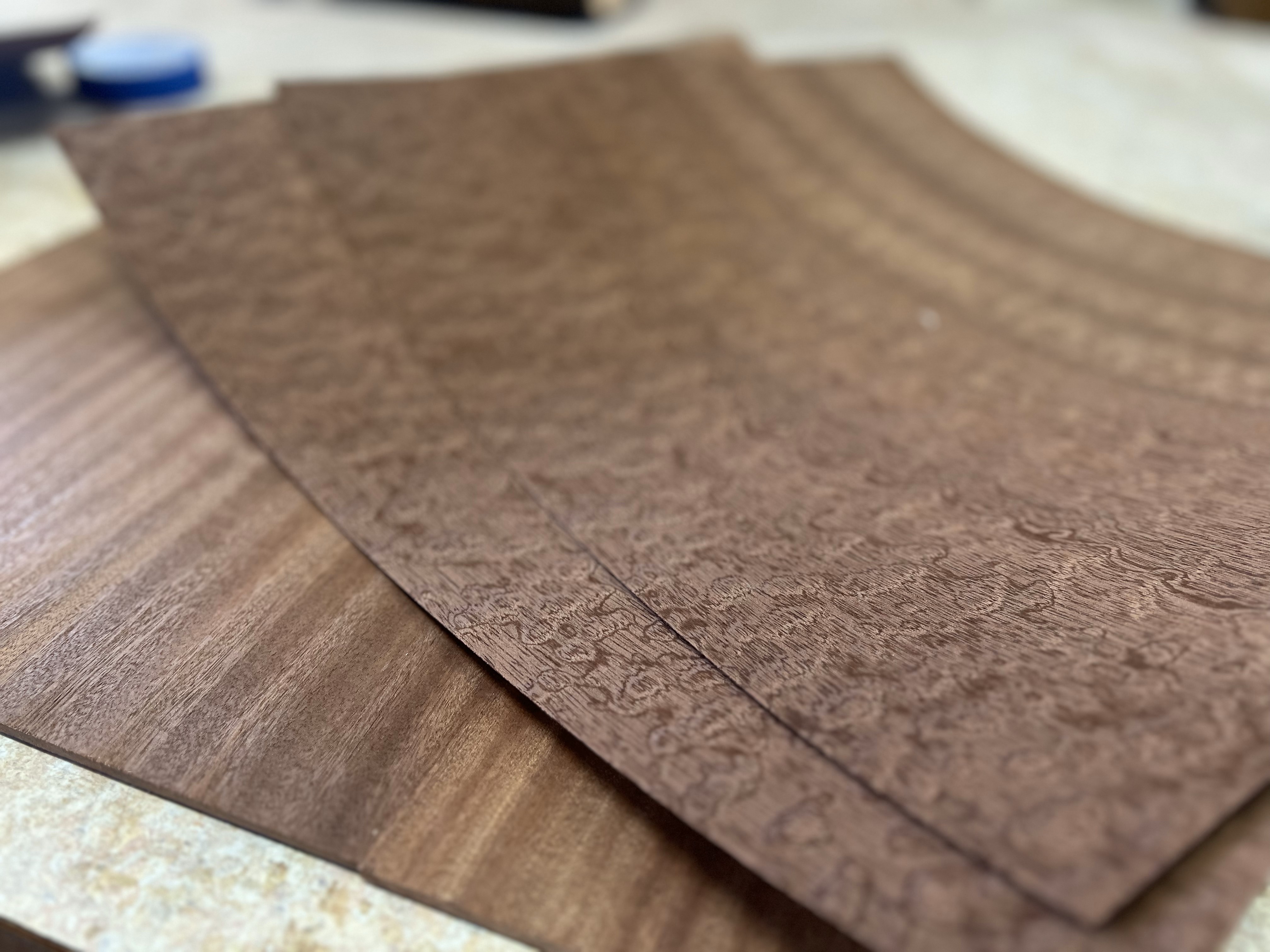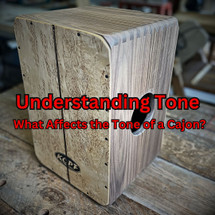Posted by Steve Head on 1st Sep 2024
Understanding Tone: What Affects the Tone of a Cajon?
The tone of a cajon is one of its most defining characteristics, shaping the overall sound and feel of the instrument. Tone refers to the quality and character of the sound that the cajon produces, including its warmth, brightness, and resonance. As the owner of Kopf Percussion, I’ve spent years refining the tone of my cajons to meet the diverse needs of musicians. In this blog post, I’ll explore the various factors that affect the tone of a cajon and how these elements can be adjusted to achieve the perfect sound.
1. Material of the Tapa

- Impact on Tone: The tapa (front playing surface) is perhaps the most crucial component in determining the tone of a cajon. The type of wood used for the tapa directly influences the sound’s warmth, brightness, and resonance. Hardwoods like birch and oak tend to produce a brighter, more articulate tone with a sharper attack, while softer woods like mahogany and cedar offer a warmer, mellower sound with a richer low-end response.
- Example: At Kopf Percussion, I select tapa materials based on the desired tonal qualities. For instance, a birch tapa is often chosen for its bright, cutting tone that works well in genres like Flamenco and pop, whereas a mahogany tapa might be used for a warmer, more resonant tone suited to acoustic and jazz settings.
2. Thickness of the Tapa
- Impact on Tone: The thickness of the tapa also plays a significant role in shaping the tone. A thinner tapa allows for more vibration and resonance, leading to a brighter, more responsive tone. In contrast, a thicker tapa can produce a deeper, more focused tone with a slightly reduced resonance.
- Example: Depending on the player’s preference and the musical style, I might recommend a thinner tapa for those seeking a lively, bright tone, or a thicker tapa for a more controlled, deep tone.
3. Wood Type of the Cajon Body
- Impact on Tone: The wood used for the body of the cajon also influences the tone. The body acts as the resonating chamber, amplifying the sound produced by the tapa. Dense woods like maple or walnut tend to produce a rich, full-bodied tone with a strong low-end presence, while lighter woods like pine or poplar may result in a brighter, more open sound.
- Example: At Kopf Percussion, I often use high-quality hardwoods for the cajon body to ensure a balanced tone that complements the tapa, providing both warmth and clarity.
4. Design and Construction of the Cajon
- Impact on Tone: The overall design and construction of the cajon, including the size, shape, and internal bracing, significantly affect the tone. A larger cajon with more internal volume typically produces a deeper, bass-heavy tone, while a smaller cajon might offer a brighter, more focused sound. Additionally, the way the cajon is constructed—such as the use of internal bracing or sound ports—can enhance or dampen certain frequencies, shaping the overall tonal character.
- Example: I design each cajon at Kopf Percussion with specific dimensions and construction techniques to optimize the tone for various musical styles, ensuring that each instrument delivers a rich, balanced sound.
5. Snare System
- Impact on Tone: The snare system inside the cajon adds a layer of complexity to the tone. Snares, which can consist of metal wires, strings, or rattles, introduce a buzzing element that enhances the sharpness and definition of the sound, particularly in the higher frequencies. The type, tension, and placement of the snares can all affect the tonal balance between the snare and bass sounds.
- Example: In my S-Series Snare Cajons, I carefully design the snare system to provide a crisp, articulate tone that complements the deep, resonant bass, creating a versatile instrument capable of handling a wide range of musical genres.
6. Sound Hole Size and Placement
- Impact on Tone: The size and placement of the sound hole also influence the tone of the cajon. A larger sound hole allows for more air movement, which can enhance the bass response and overall resonance, resulting in a fuller, richer tone. Conversely, a smaller sound hole can produce a more focused, controlled tone with a tighter bass response.
- Example: I experiment with different sound hole designs to achieve the optimal tonal balance for each cajon model, ensuring that the instrument projects well and offers a pleasing tonal quality.
7. Playing Technique
- Impact on Tone: While the construction of the cajon is fundamental, the player’s technique is equally important in shaping the tone. The way you strike the tapa—whether with the palm, fingers, or a combination of both—can significantly affect the tonal character. Additionally, striking different areas of the tapa will produce different tones, with the center yielding a deeper, bass-heavy tone and the edges producing a sharper, snappier sound.
- Example: I encourage cajon players to explore various playing techniques to fully realize the tonal possibilities of their instrument, adapting their approach to suit the musical style and desired sound.
Conclusion: Crafting the Perfect Cajon Tone
Understanding what affects the tone of a cajon is essential for both players and builders. From the materials used in construction to the design, snare system, and playing technique, every detail plays a role in shaping the tone of the instrument. Whether you’re seeking a bright, cutting tone or a warm, resonant sound, knowing how these factors interact allows you to choose or customize a cajon that perfectly fits your style.
At Kopf Percussion, I’m dedicated to crafting cajons that offer the perfect balance of tone, sustain, and overall sound quality. Each cajon is designed with careful attention to detail, ensuring that you get the best possible sound for your music. If you’re interested in exploring my handcrafted cajons and finding the one that’s right for you, check out my American ToneWood Series Cajon collection. Let’s work together to create the perfect tone for your playing style.


